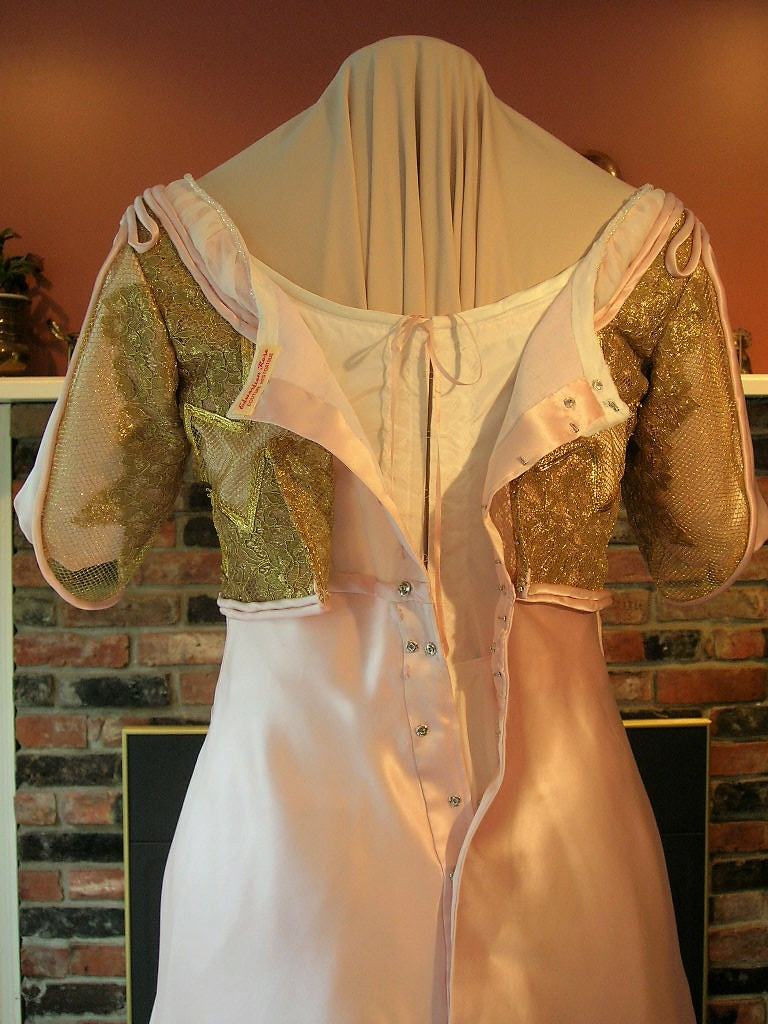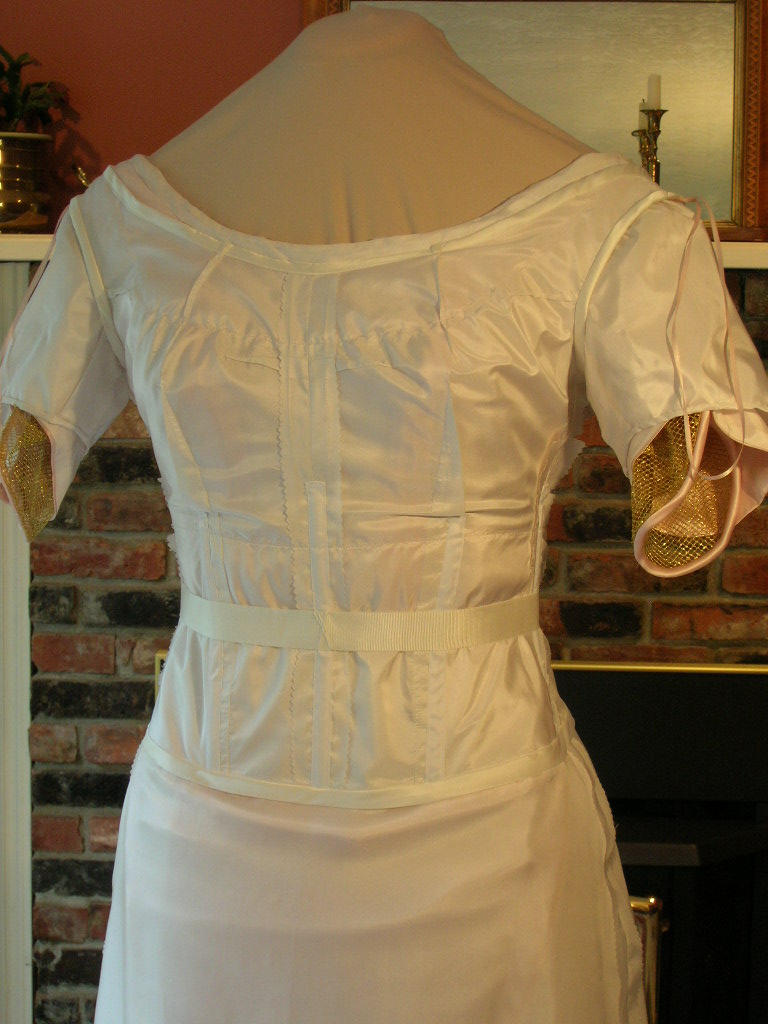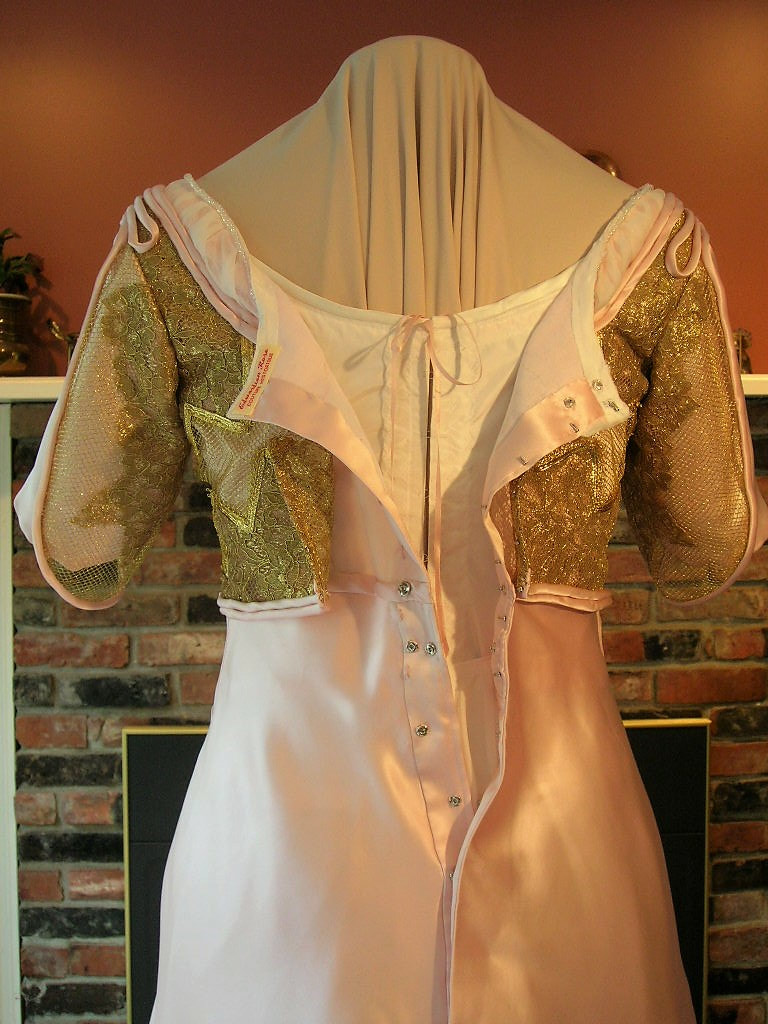|
When looking at photos of luscious late-Edwardian and 1910's extant gowns, many people are unaware that the softness and fluidity is a complete illusion, meant to present an outward effect, but built upon a hidden world of structure below. That structure was the essential secret underneath Edwardian and 1910's garment construction. Aside from the work of the corset in creating the fashionable line, virtually every evening gown, and most dressy day gowns from 1900 through to the end of the WWI era, were constructed over a closely-fitted, even personally-fitted and boned, foundation or under-bodice, to establish the proper silhouette. A secondary purpose of the closely-fitted foundation was to provide a sort of firm scaffold on which all of the outer elements of the gown could be mounted, including the often heavy, widely-trained skirts. Thirdly, the foundation helped to keep the entire garment from shifting on the wearer's body when worn -- most evening gowns, and many fancy day gowns, had the addition of a petersham belt sewn into the foundation for this purpose. Lastly, a well-designed foundation prevented costly textiles from coming into direct contact with the body and provided additional support and protection for the garment itself .
0 Comments
Although those of us who have worn 18th century stays are familiar with the usual way these are spiral-laced, there can be a problem with stays that are back-laced only, if no one else is around to act as a helper or dresser. I personally prefer back-lacing stays for their smooth, firm and comfortable solid fronts. But getting spiral lacing done up properly and firmly on one's own in back-lacing stays can either require a feat of contortionism or a valiant surrender to a less-than-ideal silhouette. Some time ago, mostly out of necessity because my "helper" husband was having an almost excruciating time: (a) trying to understand the physics of spiral lacing; and (b) trying to actually do up the lacing effectively, I devised a bit of a cheating lacing system -- what some might call an 18th century lacing "hack". Do you have PDF anxiety? Perhaps afraid to purchase a full-sized PDF pattern because you think you might not be able to figure out how to print and assemble it? Concerned that printing a PDF at home might take too much time, skill, or printer ink?
If so, here's your chance to test it out without risking any money. I've made some PDF patterns available below that are small enough to print out on a maximum of 4 sheets of regular printer paper -- just enough to give you a sample of what's involved in the process. Click on the "Read More" link (below right) to access the patterns and more information. There's hardly anything more wonderful than a new beginning -- whatever kind of beginning it may be. In my case, it's the first post in my new blog on my new website! I think that qualifies as exciting (at least to me it does!).
For years I coped with a plain vanilla, ludicrously basic DIY website that really didn't serve my needs well, but at least gave me a spot on the internet. Then came my Facebook page, which was much better in many ways, but still didn't give me a really efficient place to permanently organize and access all the thoughts, articles, and projects that I'd want to share. With Facebook, everything moves down the scroll and out of sight so quickly. Good luck trying to locate a short post on an obscure topic six months later! |
AuthorPatricia Preston ('The Fashion Archaeologist'), Linguist, historian, translator, pattern-maker, former museum professional, and lover of all things costume history. Categories
All
Timeline
March 2024
|















 RSS Feed
RSS Feed